Historical re-enactment in Italy is normally about medieval pageantry with lots of elaborate flag waving, or Roman centurions charging tourists for photos. In Venice, the only attempt at serious historical re-enactment is a small group of men trying to keep the memory of the fanti da mar alive.
The fanti da mar was a corps of marine infantry of the Serenissima. Most of the men came from the Venetian dominio di terra, and from Dalmatia across the Adriatic Sea.
The corps existed from the Middle Ages until the end of the Venetian Republic in 1797.
Why re-enact the fanti da mar?

The re-enactment group for the fanti da mar doesn’t make a lot of fuss about what they do. They don’t seek an audience, and will do their thing even if there’s nobody watching.
It is not a show.
For the Festa della Sensa, they head to the Sant’Andrea fortress in the lagoon. The fortress of Sant’Andrea guards the entrance from the sea into the lagoon. The origin of the fortress goes back to the Middle Ages, but the current appearance is mostly from the 1500s.
Sant’Andrea is the only place where somebody fired in anger in defence of the Venetian Republic in 1797. Those soldiers were fanti da mar from Dalmatia.
The only troops shooting to defend the Serenissima weren’t Venetians.
The re-enactment group, dressed as fanti da mar from the 1700s, hoist the gonfalone, the ancient Venetian flag, from the top of the fortress in the morning. They then stand guard under the flag while the main ceremony of the Sposalizio del mare takes place below.
Once the main events of the Sposalizio are over, they lower the gonfalone, pack up, put the muskets away, change back into normal clothes, and head back to their normal lives.
This year I happened to be nearby in my boat, on official business with a university professor and some photographers. We saw them raise the flag, and decided to disembark and go up and have a look.
The Italian state has effectively abandoned the fortress of Sant’Andrea. Little is done to protect the monument, and little is done to prevent people from going there.
At the top of the maschio we found five re-enactors in the process of taking down the gonfalone.
Venetians, not Italians
Chatting with the men as they packed up, it became clearer why they did it.
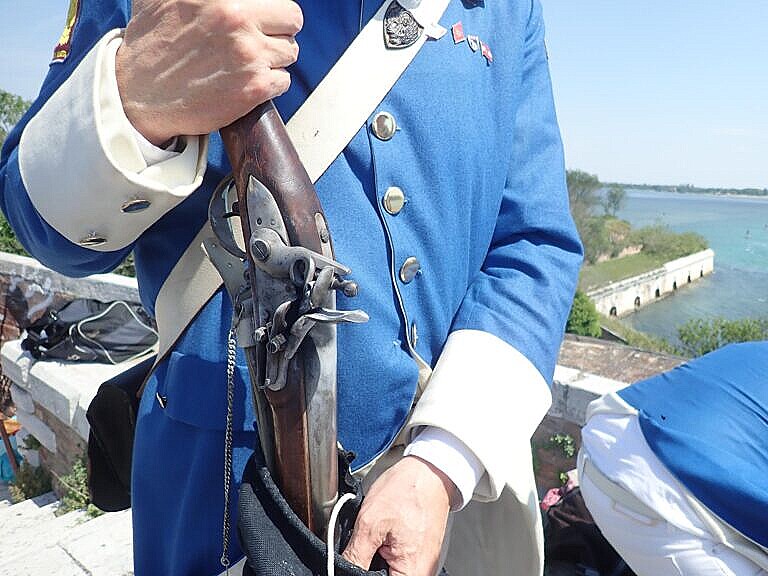
Many Venetians still see the Serenissima as a better and more legitimate state than those that succeeded it, the Austrian-Hungarian empire, and then Italy, first Kingdom, then Republic.
They feel Venetian more than they are Italians.
Dressing up as fanti da mar, the only persons who fought to defend the Republic, hoisting the Venetian flag once again over that same fortress where they fought, and standing guard once again on top of the tower under the same flag, is their way of paying their respect to those soldiers, and of mourning the lost Republic.
It is also in some small way an expression of dissent and resentment against having become Italians rather than Venetians.
It is both a statement of identity, and a protest against having that identity eroded.
When we left the island in our boats, the salute was: Viva San Marco.
Photos of the fanti da mar re-enactors

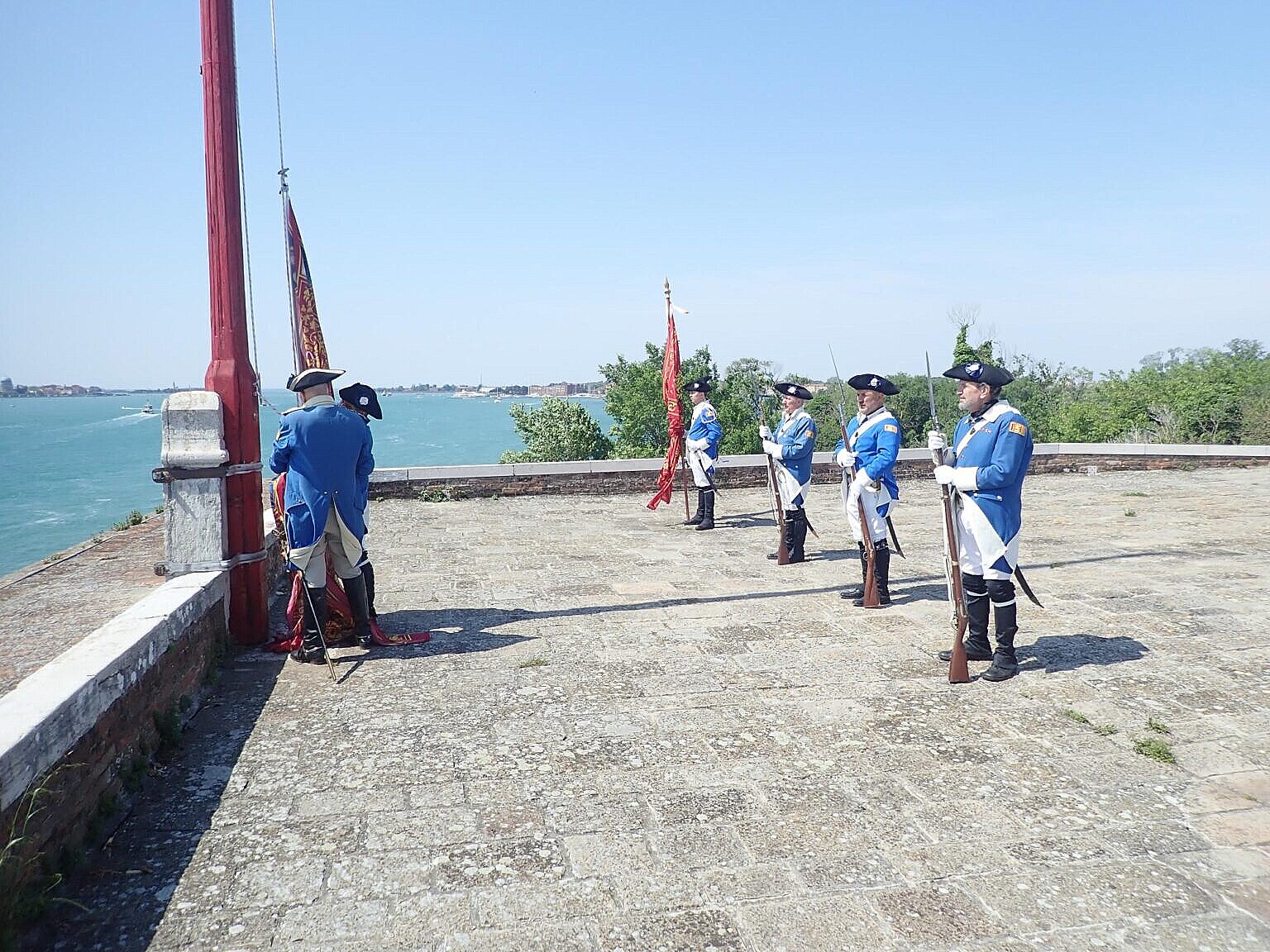
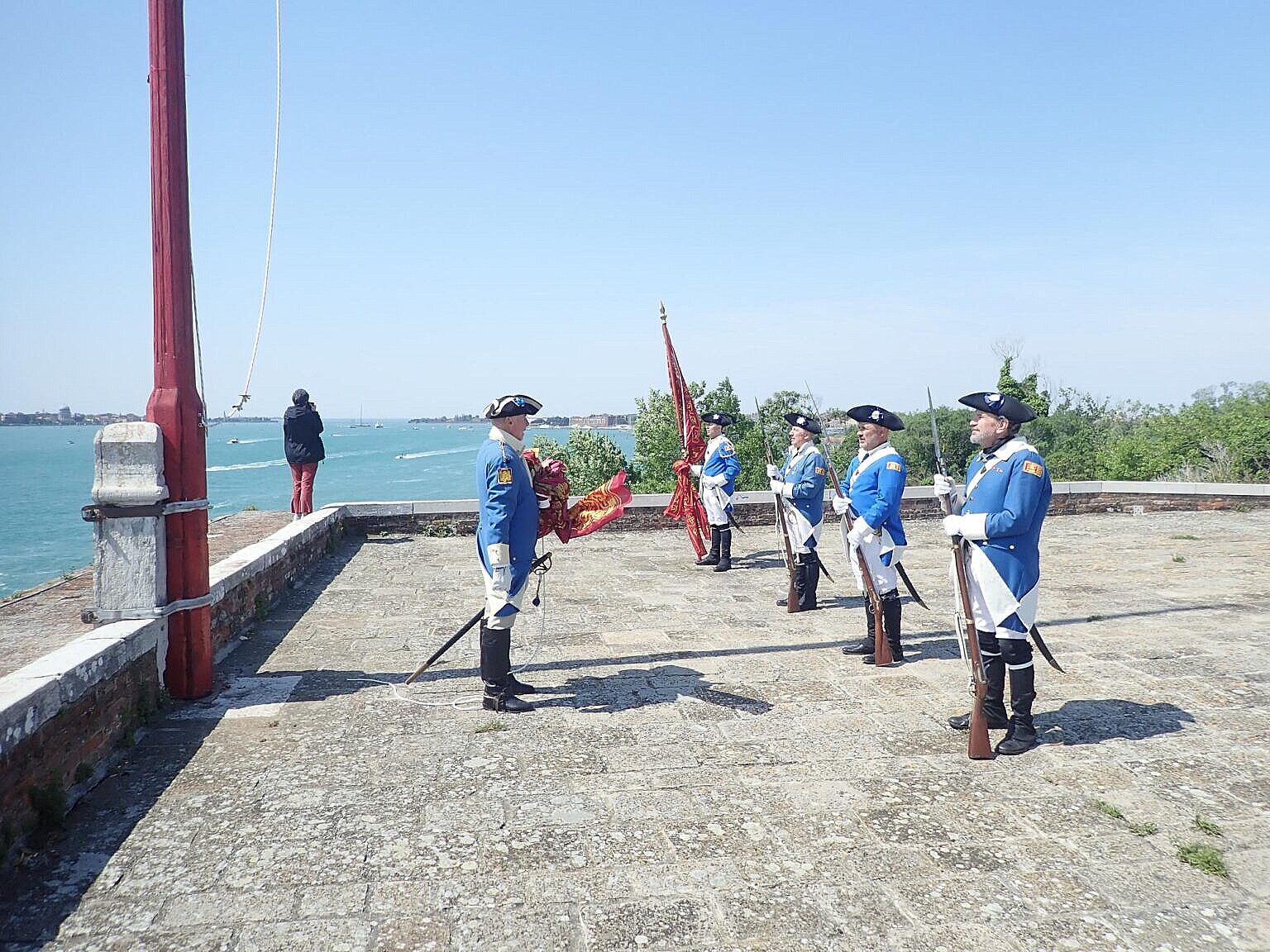
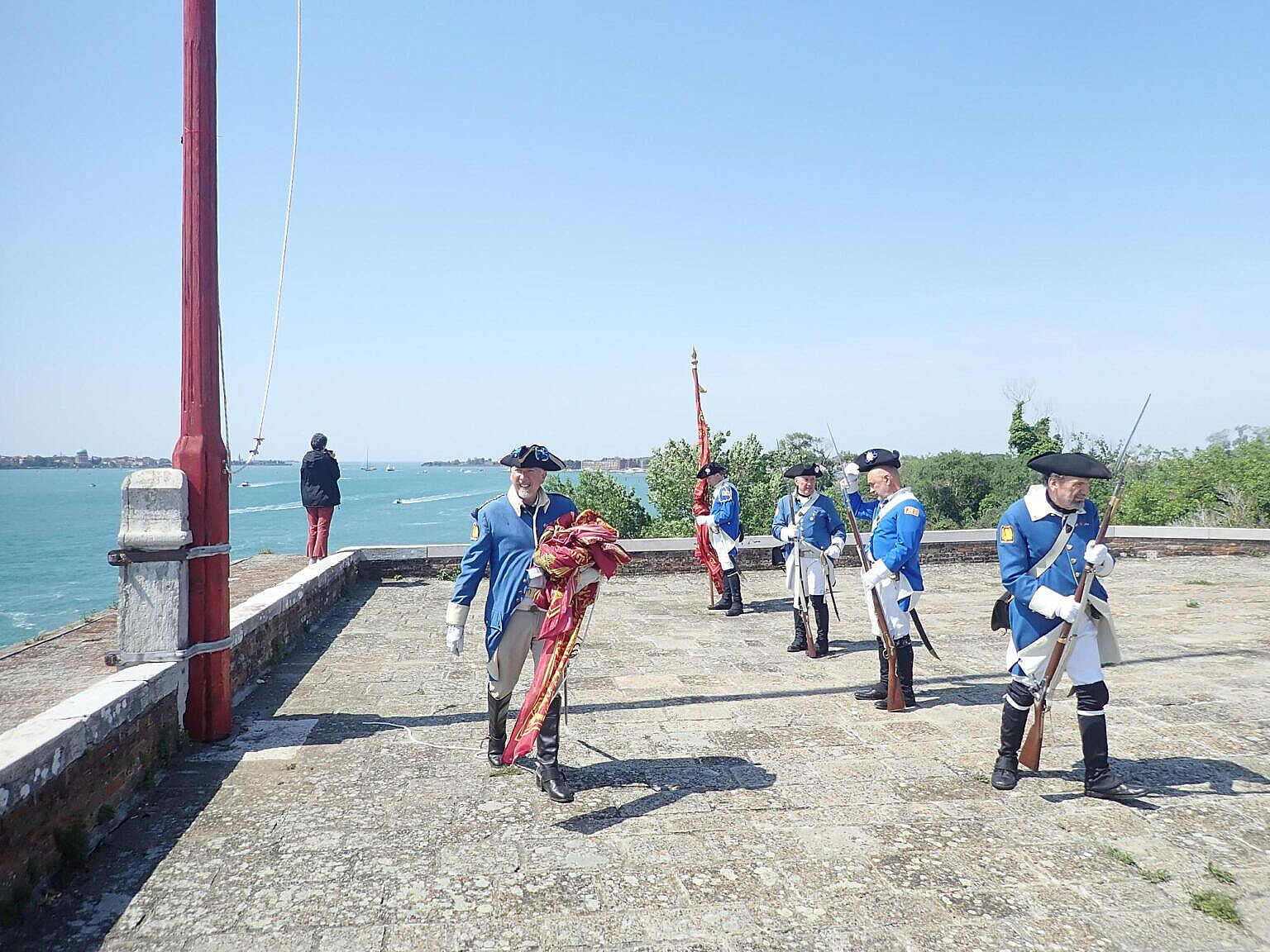
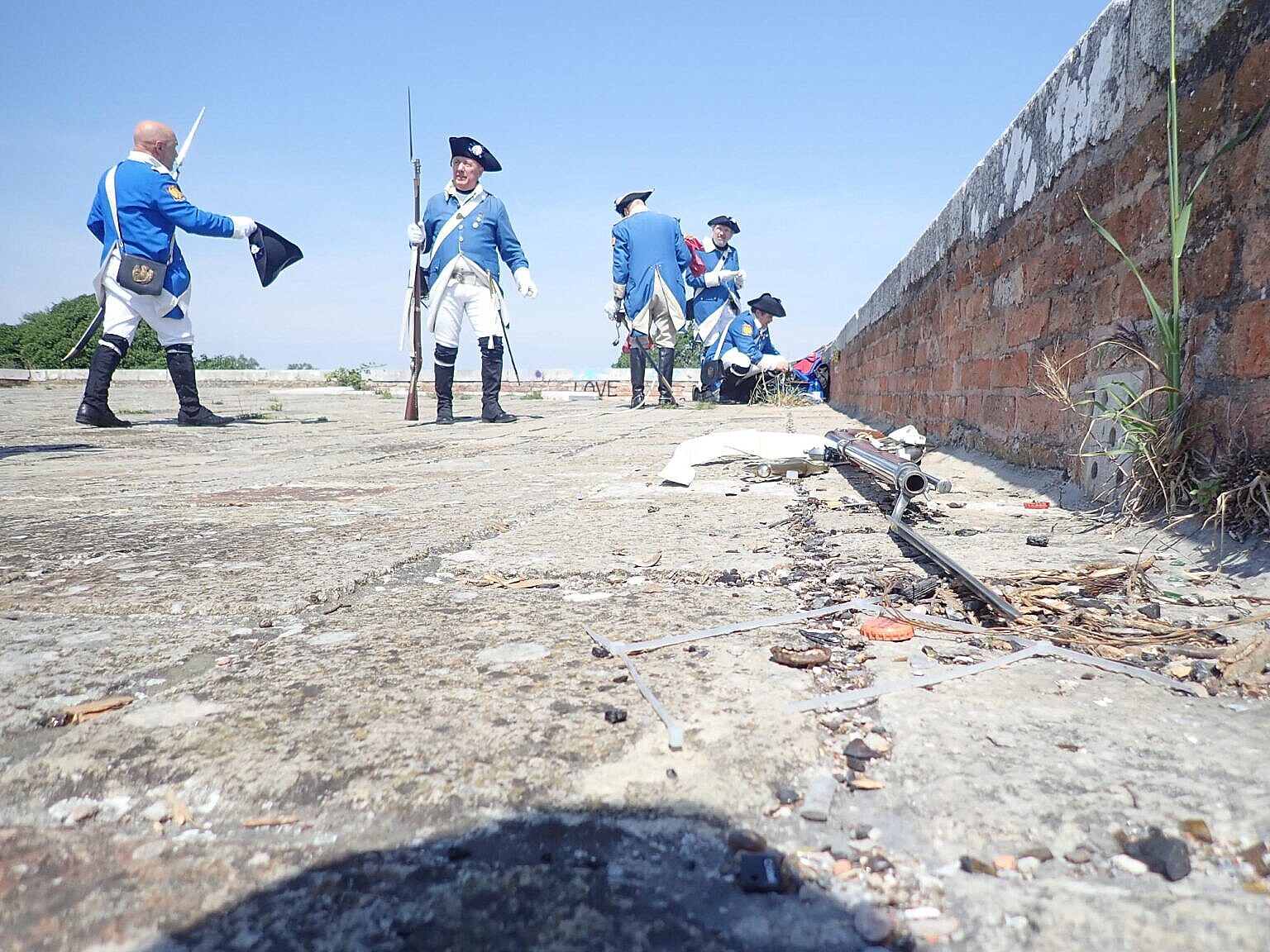
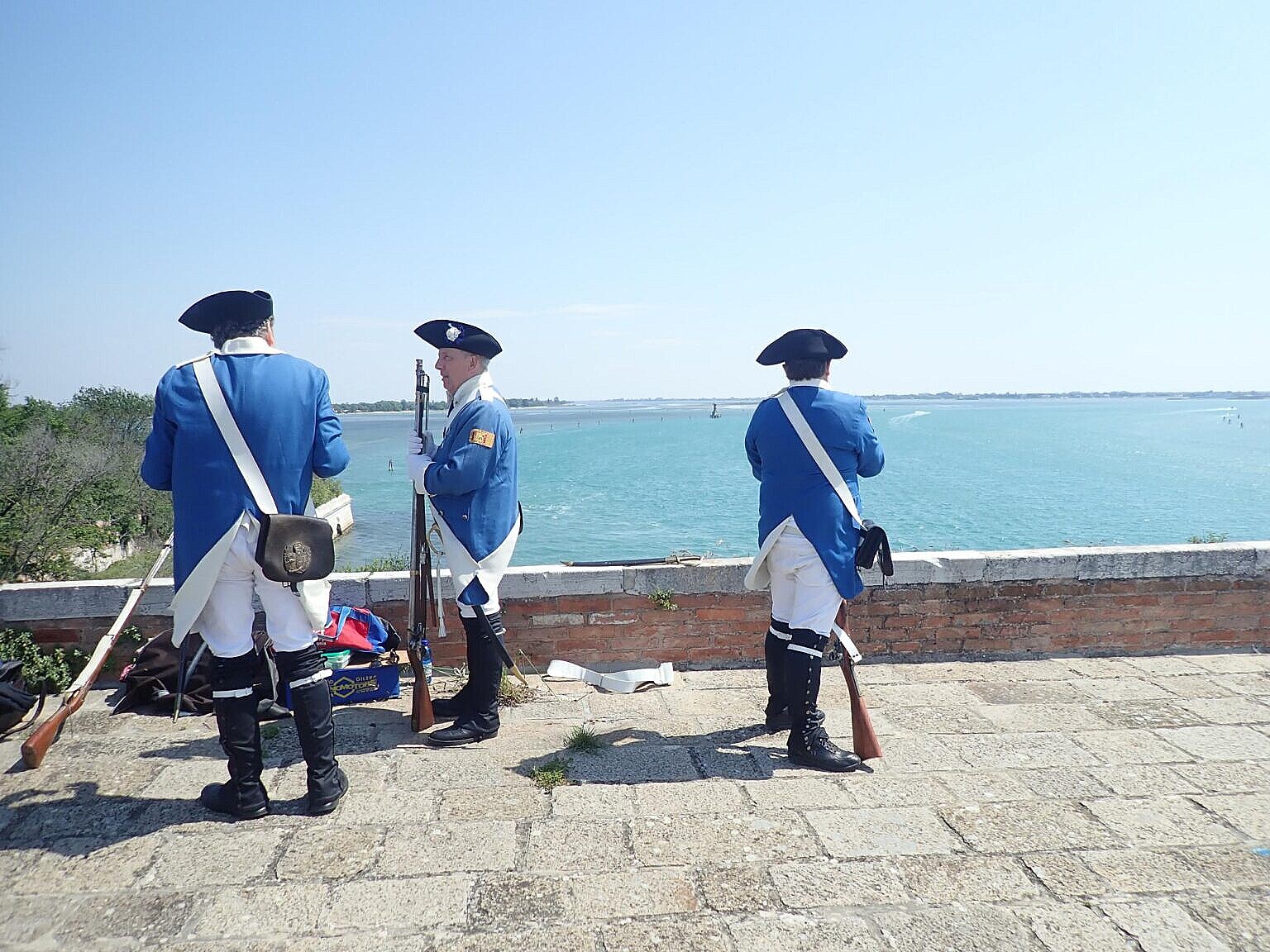
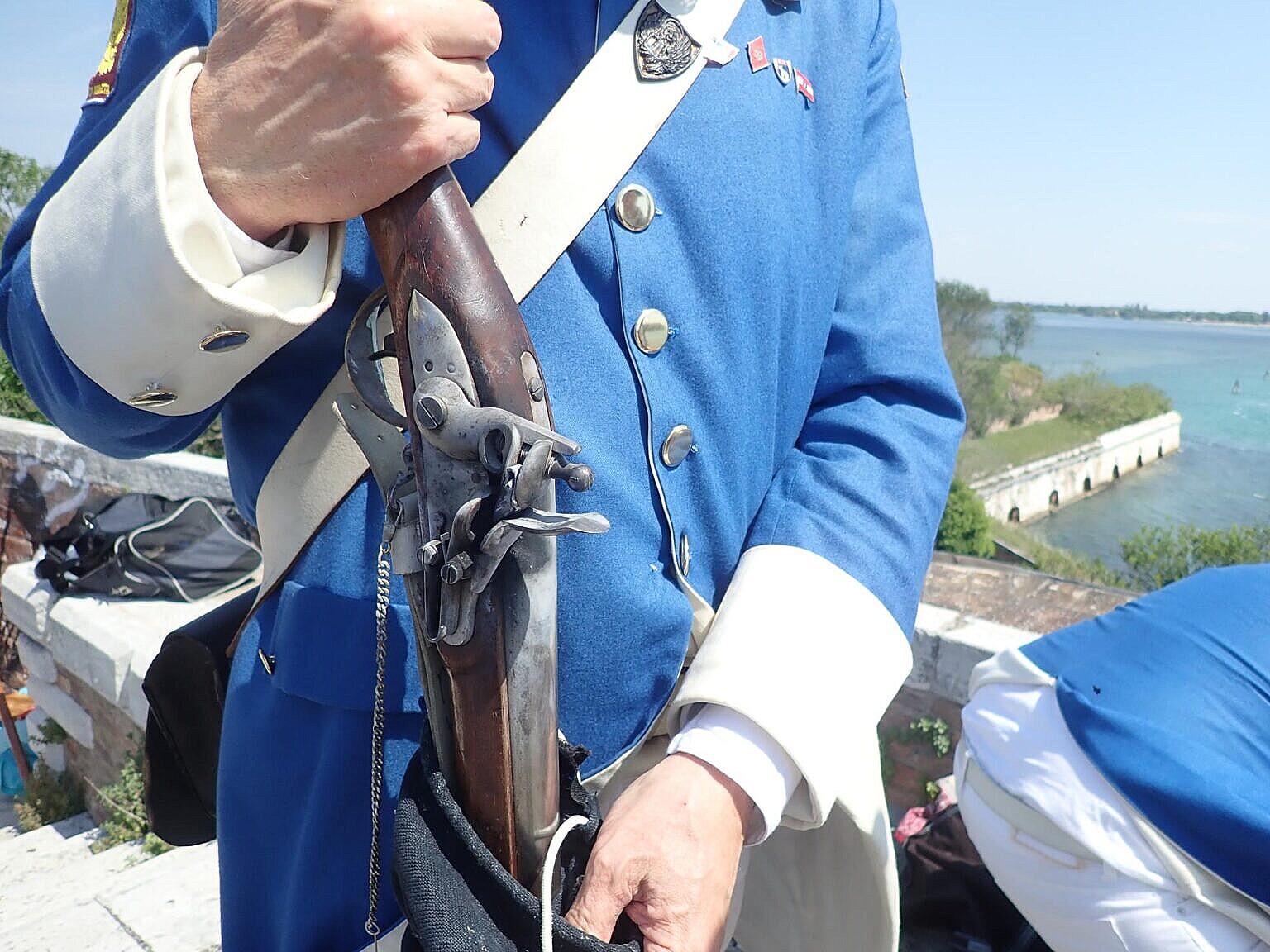
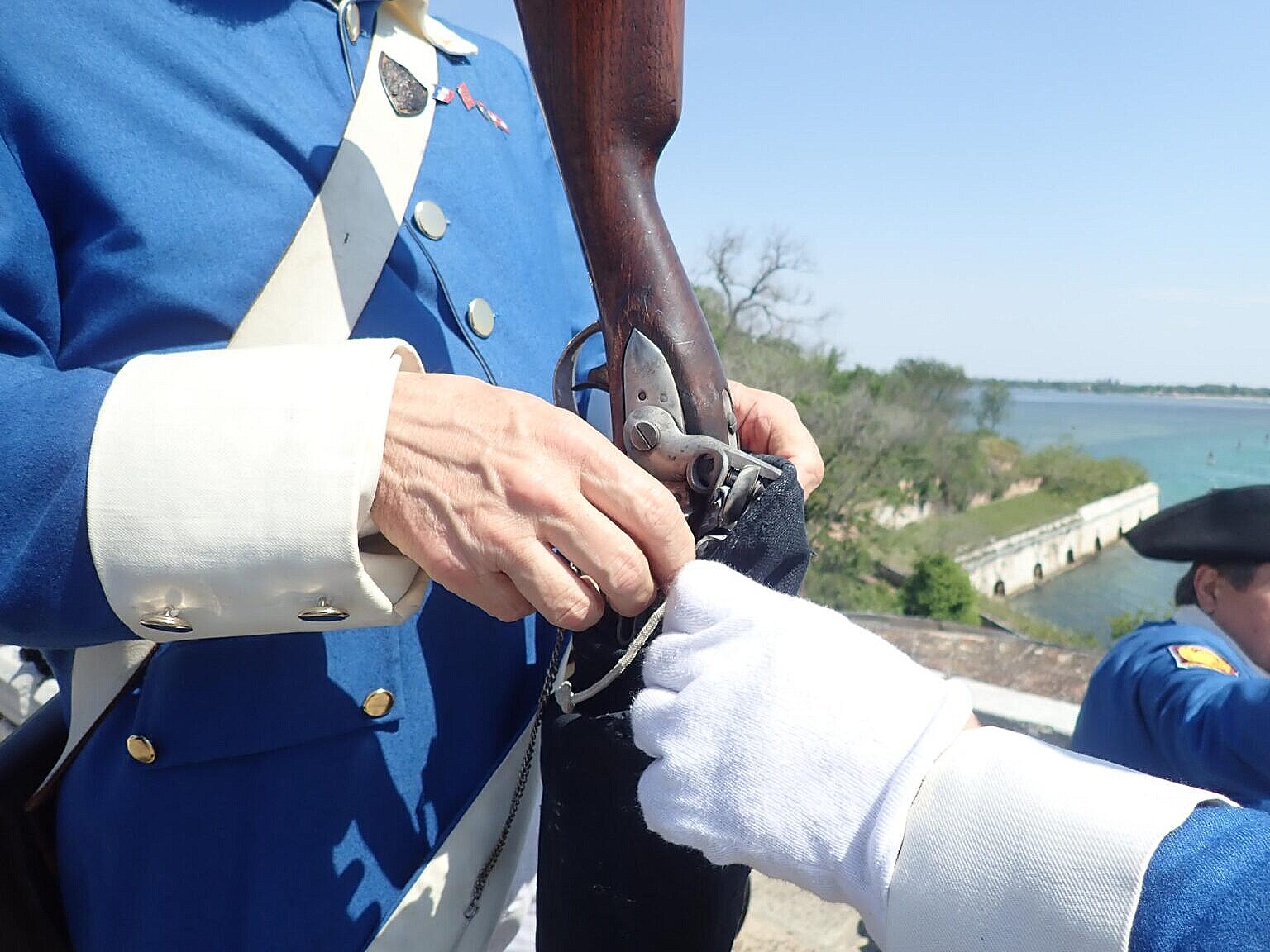
Related articles
- The fortress of Sant’Andrea
- Domenico Pizzamano
- Chronology of the Fortress of Sant’Andrea
- The Fall of Venice

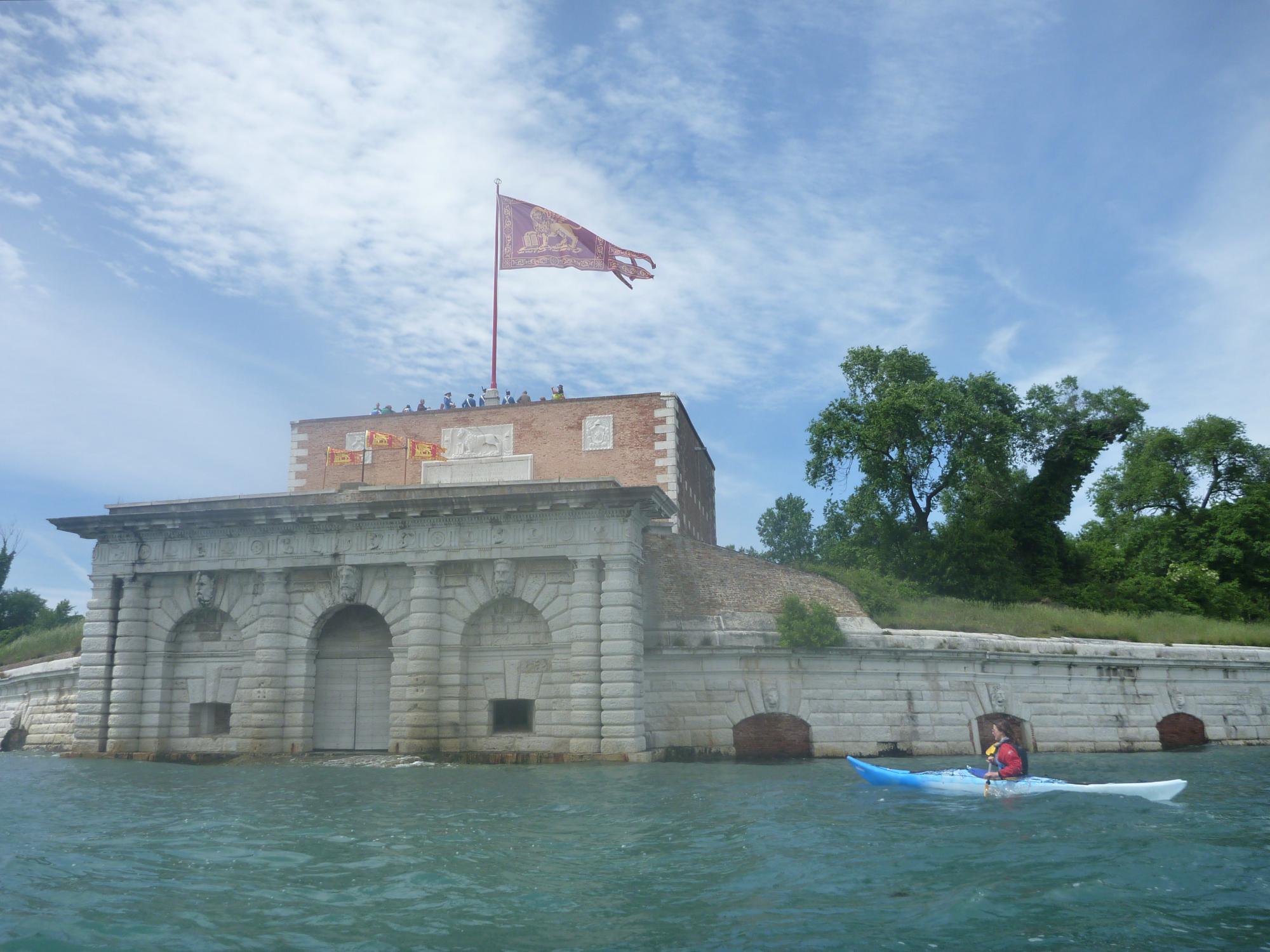
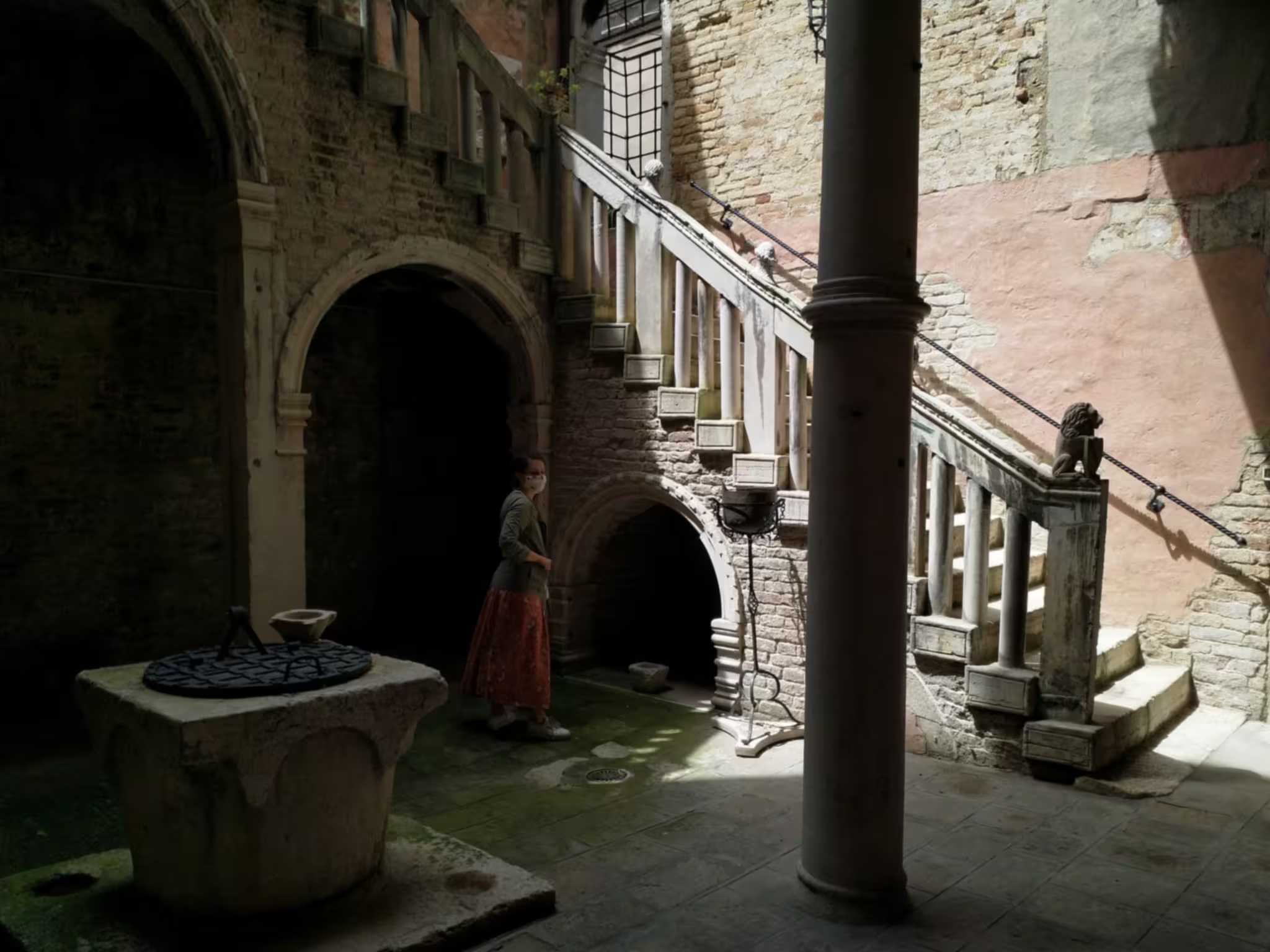

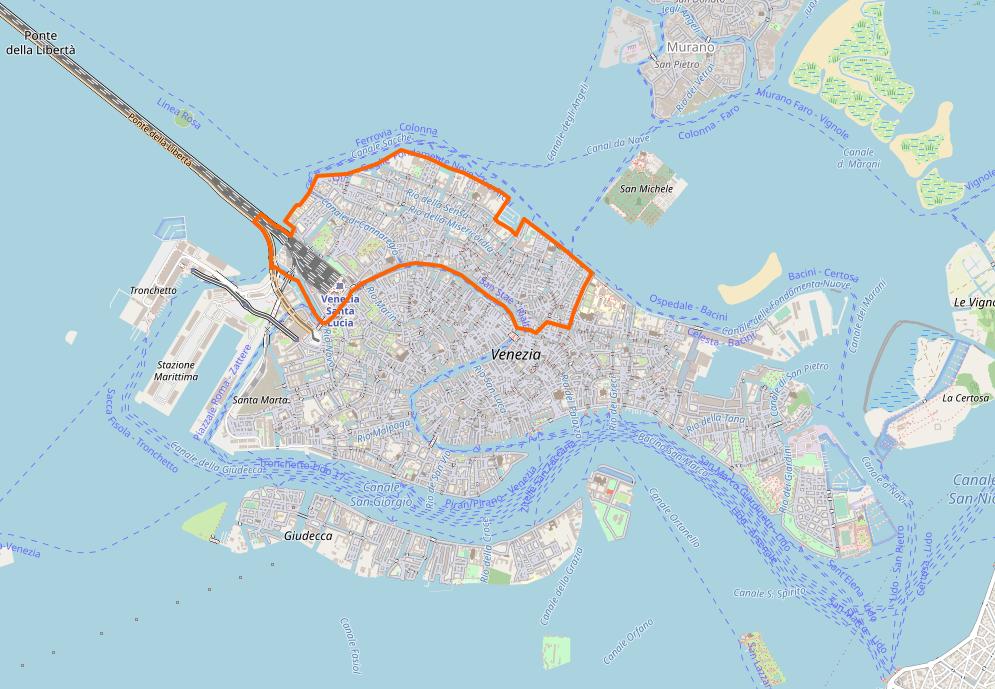
Leave a Reply